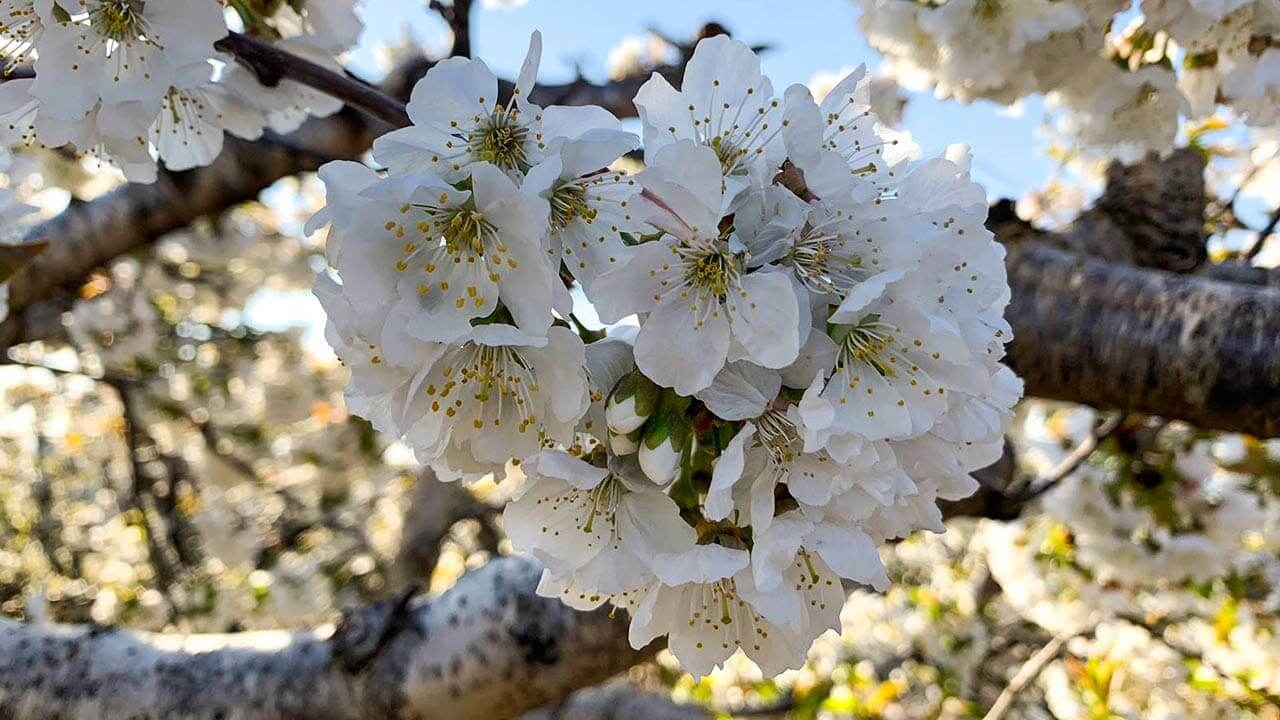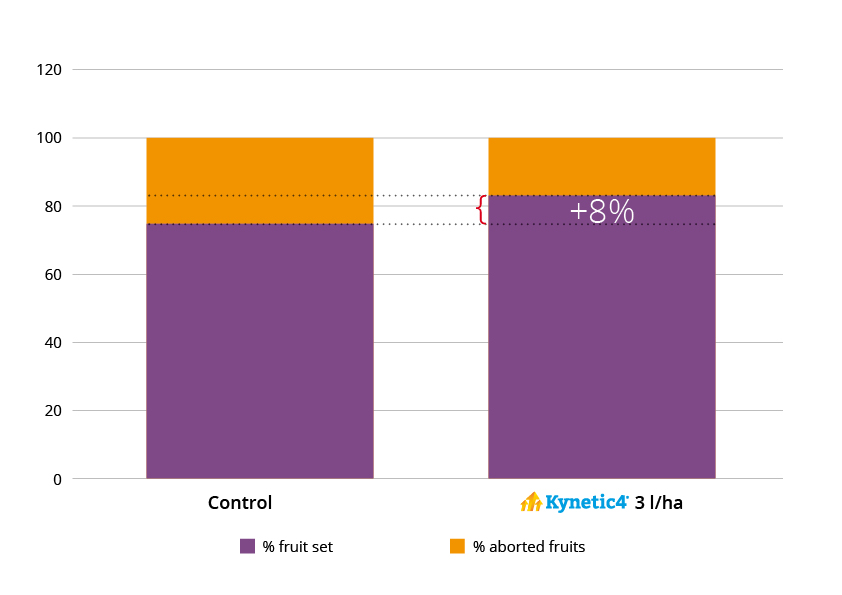Cherry blossom: treatments for maximum quality

Cherry blossom
There is no denying that the cherry blossom is one of nature’s most beautiful spectacles. The Jerte valley in Extremadura, Spain, the island of Okinawa in Japan and the city of Amstelveen in the Netherlands are some of the best places to see it, according to the travel guides.
Such beauty is not trivial and, as with almost everything in nature, it has a purpose and a clear physiological meaning. Cherry blossom is a key process for pollination and subsequent fruit set, which determines the quality and yield of the crop in terms of production.
In other words, the treatments and strategies we apply during blossoming have a great influence on optimising the subsequent fruit set and, consequently, the formation of the fruit, which determines the production volumes of the harvest. This is why we said that such beauty does not come for free.
As with other fruit trees, cherry blossom occurs in early spring, when temperatures rise and frosts disappear. Once the tree has accumulated the necessary chilling hours, it leaves behind the vegetative phase behind and enters the reproductive phase, which is essential for its development. This is a relatively short process, lasting no more than 15 to 20 days, with many perculiarities depending on the geographical area or the variety of cherry.
During this process it is essential to approach the right temperature to ensure good pollination, pollen tube development and fertilisation of the flower. It is also essential to guarantee the supply of energy and nutrients that the tree needs at a time of peak demand. For this reason, Seipasa recommends the application of biostimulant treatments at this point in the cherry blossom season, to improve the quality of the flowering process and subsequent fruit set.
Cherry blossom biostimulants
Enter Kynetic4, a plant-based biostimulant specifically designed to stimulate and optimise the natural flowering process from the 4 key moments: flower development, pollination, fertilisation and fruit set. The use of Kynetic4 also stimulates the synthesis of specific proteins at times of high energy demand in crops.
This can be seen in figure 1, which shows the results of the Kynetic4 trial in cherry and its effect on fruit retention. The conclusions show that the use of Kynetic4 increased the number of fruit set by 8% compared to the control, a fact that highlights the energy contribution provided by the product at this peak time to achieve maximum nutritional efficiency and optimal fruit set.

Figure 1: % of fruit set compared to fruit aborted.
As in many natural processes, where only the best adapted survive, plants also select the best flowers and the best fruits to ripen. Only a percentage of flowers set. It is very important that flowering is as uniform as possible to reduce competition and thus achieve a better balance in the fruit load on the tree, which will later affect its size and commercial value.
High-quality fruit set
Growers need to have a high percentage of fruit set in order to achieve stable yields and good volumes. This is where the Kynetic4 biostimulant comes in, reducing the number of aborted fruits. This can be seen in figure 2 of the same cherry trial: Kynetic4 achieves a 7% increase in the number of retained fruits, which also reduces the drop or abscission of flowers and unfruitful fruits.
.jpg)
Figure 2: % of fruit retained versus fruit abscission.
In the case of cherry blossom, Seipasa’s strategy recommends starting treatment with Kynetic4 at the beginning of the flowering, full bloom, and at petal fall or fruit set.
Seipasa’s biostimulant is a very good alternative to increase the fruit set quality. Thanks to its metabolic intermediates and the energy provided by the product, Kynetic4 promotes the development of the pollen tube that will receive the pollen and then fertilise the fruit.
Kynetic4 also improves the quality of pollen and nectar and supports pollinators in their crucial role in the flowering process.

